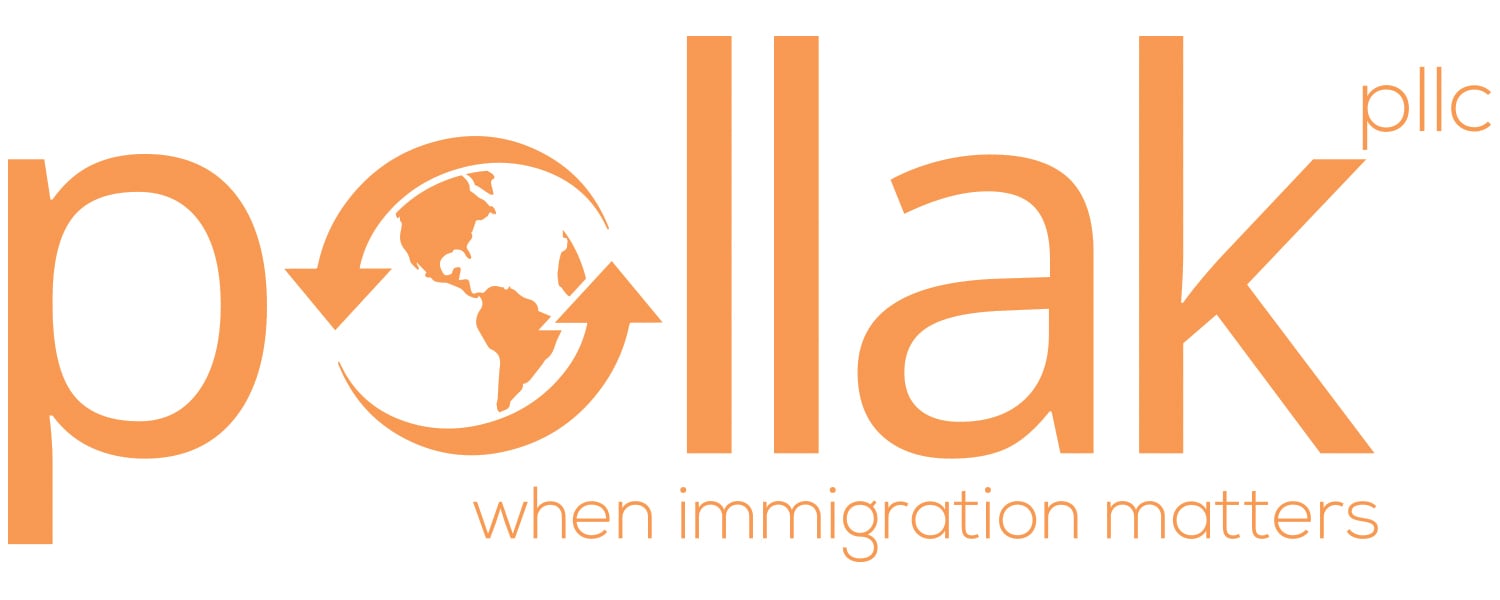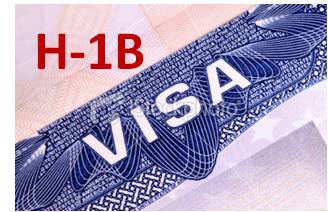For individuals hoping to work in the United States, understanding the difference between employment-based visa categories is essential. Employers, too, must carefully determine which visa program aligns with their staffing needs, job roles, and long-term workforce goals. While both the H-1B and H-2B visas allow foreign nationals to work legally in the U.S., they serve very different purposes and come with unique sets of benefits and restrictions.
If you are navigating this process—whether as a foreign national or an employer—clarity is critical. Making the wrong move or misunderstanding eligibility criteria can lead to delays, denials, or long-term immigration consequences. This guide explains the fundamental differences between the H-1B and H-2B visas and outlines how Pollak PLLC provides strategic legal support to help you move forward with confidence.
What Makes Pollak PLLC Different?
Choosing the right legal team is just as important as selecting the right visa category. Immigration law is nuanced, and even small errors can have major consequences. That's where Pollak PLLC comes in.
Decades of Employment-Based Immigration Experience
Pollak PLLC offers over 27 years of exclusive experience in immigration law. The firm has successfully handled thousands of cases involving work-based visas, employer petitions, and green card transitions. From multinational corporations to small businesses and individual workers, Pollak PLLC understands how to craft strategies that succeed.
Personalized, Senior-Level Guidance
At Pollak PLLC, every matter benefits from the direct involvement of Managing Attorney Karen-Lee Pollak. Unlike larger firms that may delegate your case to junior staff, Pollak PLLC ensures your file is managed by experienced professionals who understand the stakes and know how to deliver results.
Clear Communication and National Reach
Clients can expect proactive, transparent communication throughout the process. With offices in Dallas and Fort Lauderdale and clients nationwide, Pollak PLLC offers the personalized service of a boutique firm with the reach of a national practice.
Understanding the H-1B Visa
For skilled workers with advanced education or specialized training, the H-1B visa lawyer offers a path to lawful employment in the United States. This visa category is widely used by U.S. companies seeking to fill roles in engineering, information technology, healthcare, and more.
Who Qualifies for an H-1B Visa?
The H-1B visa is intended for foreign nationals working in "specialty occupations"—roles that require at least a bachelor's degree or its equivalent. Common job titles include software engineer, financial analyst, medical researcher, and architect.
Applicants must have a valid job offer from a U.S. employer. The employer must also demonstrate that the job requires a specific set of specialized skills and that the foreign worker meets all listed qualifications.
Duration and Renewal
The H-1B visa is initially granted for up to three years and can be extended for an additional three years. In many cases, H-1B visa holders may eventually become eligible to apply for permanent residency through employment-based green card categories.
Employer Responsibilities
Before filing the H-1B petition, the employer must submit a Labor Condition Application (LCA) to the Department of Labor, affirming that:
- The foreign worker will receive the prevailing wage for the occupation
- Hiring the foreign worker will not negatively impact conditions for similarly employed U.S. workers
Annual Cap and Lottery
Congress currently limits the number of new H-1B visas to 65,000 annually, with an additional 20,000 for individuals with a U.S. master's degree or higher. Because applications far exceed this cap, USCIS runs a lottery system to randomly select eligible petitions each fiscal year.
Understanding the H-2B Visa
Unlike the H-1B visa, the H-2B program is designed for non-agricultural workers filling temporary, seasonal, or peak-load jobs. Employers in industries such as hospitality, construction, landscaping, and seafood processing often rely on H-2B workers to meet fluctuating labor demands.
Qualifying Employers and Job Types
To qualify for the H-2B visa program, an employer must:
- Offer a temporary job that is seasonal, intermittent, or tied to a one-time occurrence
- Prove that there are not enough U.S. workers who are able, willing, and qualified to perform the job
- Show that hiring foreign workers will not adversely affect the wages or working conditions of U.S. workers
Jobs typically do not require a college degree or formal training, making this visa accessible to a broader group of applicants.
Duration and Limitations
The H-2B visa is generally granted for a period of up to one year, with possible extensions up to three years in total. Unlike the H-1B visa, the H-2B is strictly nonimmigrant—meaning it does not allow for dual intent or long-term immigration planning.
Recruitment Requirements
Employers must actively recruit U.S. workers before filing a petition. This includes placing advertisements in newspapers and registering the job with the state workforce agency. Only after demonstrating an inability to fill the role domestically can the employer move forward with hiring foreign labor.
Visa Cap and Allotment
The annual cap for H-2B visas is set at 66,000. This total is divided evenly: 33,000 for workers starting in the first half of the fiscal year and 33,000 for those in the second half. While temporary cap increases may be announced in high-demand years, they are not guaranteed.
Key Differences Between the H-1B and H-2B Visas
Though both are temporary work visas, the H-1B and H-2B categories differ significantly in terms of eligibility, job requirements, and immigration potential.
Job Type and Skill Level
The H-1B is reserved for specialty occupations requiring higher education, while the H-2B applies to non-professional, manual, or seasonal labor.
Immigration Intent
H-1B visa holders may pursue permanent residency while remaining in valid status—a concept known as "dual intent." In contrast, H-2B workers must prove they intend to return to their home country after their visa expires, which complicates any attempt to transition to a green card.
Cap and Competition
Both visa types are subject to annual caps, but the H-1B lottery is especially competitive due to overwhelming demand. Employers must prepare early and consider backup plans in case their petition is not selected.
Sponsorship and Documentation
While both require employer sponsorship, the H-1B process typically involves more scrutiny around job duties, qualifications, and wage levels. H-2B sponsorship centers more heavily on seasonal labor needs and market conditions.
Pursuing a Green Card From Either Visa
Transitioning from a temporary work visa to permanent residency is a goal for many foreign nationals. While H-1B visa holders have a relatively well-established path to a green card, those on an H-2B visa face more significant challenges due to the nature of their visa classification. With strategic planning and careful legal coordination, both groups may have options for building a long-term future in the United States.
H-1B to Green Card: Leveraging Long-Term Opportunities
For professionals on an H-1B visa, the process of applying for a green card typically begins with an employment-based sponsorship. Most applicants qualify under the EB-2 visa or EB-3 visa categories, which are designed for skilled workers and professionals.
The process starts with the employer obtaining a PERM labor certification from the Department of Labor. This step ensures that no qualified U.S. workers are available for the role and that the foreign worker will be paid a fair wage. Once this certification is approved, the employer can file Form I-140 with U.S. Citizenship and Immigration Services (USCIS), establishing the worker's eligibility for permanent residency.
Depending on the applicant's immigration history and whether a visa number is available, the final step is either adjustment of status (for those inside the U.S.) or consular processing (for those outside the country).
H-1B visa holders benefit from what is known as "dual intent," which allows them to apply for a green card without jeopardizing their current nonimmigrant status. This legal flexibility significantly eases the transition and makes long-term planning more feasible.
H-2B to Green Card: Navigating a Narrower Path
Unlike the H-1B, the H-2B visa does not allow for dual intent. Workers must demonstrate that they intend to return to their home country after their temporary stay. This requirement makes it more difficult—but not impossible—to apply for a green card.
If an H-2B worker's circumstances change, such as receiving an offer for a permanent, full-time job in the United States, they may become eligible for green card sponsorship under the EB-3 "other workers" category. In these cases, the employer must still complete the PERM labor certification and I-140 process.
Legal Timing and Risk Management
Because H-2B workers cannot express immigrant intent while in the U.S., the steps toward a green card must be carefully timed. Attempting to initiate the process too soon, or without proper documentation, may result in visa denial or future inadmissibility.
Strategic legal guidance is essential. Pollak PLLC works closely with both employers and employees to structure these transitions in a compliant and effective manner. Each case is assessed individually to determine whether a green card is truly viable and to ensure all documentation is aligned and filed in the proper sequence.
Alternatives for H-2B Workers
In some cases, H-2B workers may be better suited to pursue a different visa type that allows dual intent before beginning the green card process. For example, changing status to an H-1B or other employment-based category may open up more flexible options.
Evaluating these alternatives early on can help avoid unnecessary delays or setbacks. Pollak PLLC provides comprehensive consultations to assess eligibility, recommend next steps, and design an immigration plan tailored to each client's long-term goals.
Selecting the Right Visa Strategy
Identifying the best visa option is not a one-size-fits-all decision. For both employers and prospective employees, making the right choice requires careful thought, accurate legal interpretation, and a clear understanding of both short- and long-term goals. The distinctions between H-1B and H-2B visas can have lasting implications for career development, business growth, and immigration outcomes.
Key Factors for Employers to Evaluate
Employers navigating the visa selection process must weigh multiple considerations beyond simply filling a job opening. The nature of the role, its duration, and its place in the company's broader workforce strategy all play a role.
- Permanent vs. Temporary Needs: An H-1B visa is ideal for roles that are permanent and require specialized knowledge. Conversely, an H-2B visa fits short-term labor needs, particularly in industries like hospitality or construction.
- Skill Level and Educational Requirements: If the position calls for a bachelor's degree or higher, the H-1B visa is more appropriate. Jobs requiring only basic training or manual labor may be better suited for H-2B sponsorship.
- Timeframe and Hiring Cycles: The H-1B program follows a strict annual timeline, with application windows and lottery caps. H-2B petitions also require careful planning, particularly when preparing for peak seasonal demand.
- Wage Compliance and Labor Certification: Employers must demonstrate that they are offering fair compensation and are unable to find qualified U.S. workers. Each program has different documentation requirements and compliance rules.
Pollak PLLC helps employers analyze each of these factors and determine the most viable strategy for their specific hiring goals. Our firm also guides businesses through every stage of the process, from labor certification to petition filing.
How Foreign Workers Can Make Informed Decisions
Choosing the right visa is equally critical for foreign nationals looking to build careers in the United States. The wrong visa can limit options and delay progress toward permanent residency or long-term professional goals.
- Understanding Your Qualifications: H-1B visas are geared toward individuals with academic or professional credentials, while H-2B visas are designed for workers in temporary, lower-skilled roles. An honest assessment of your background can help determine eligibility.
- Clarifying Career and Immigration Intentions: If you plan to stay in the U.S. long-term, the H-1B visa provides a clearer path to a green card. H-2B visas, by contrast, are strictly nonimmigrant and do not allow for dual intent.
- Maintaining Lawful Status: A misstep in maintaining valid immigration status can derail even the best plans. Ensuring continuous legal presence is key to eligibility for future visa changes or green card applications.
Pollak PLLC works closely with individual clients to map out immigration strategies that support their career ambitions and long-term settlement plans. We provide the clarity and advocacy needed to move forward with confidence.
Creating a Unified Strategy
Success in the visa process comes from alignment—between the needs of the employer and the aspirations of the employee. Pollak PLLC facilitates this alignment by designing legal solutions that meet the goals of both parties. Whether your priority is speed, compliance, or long-term planning, we help you make informed, strategic decisions.
Schedule a Consultation With Pollak PLLC
If you are an employer seeking to expand your workforce or a foreign national pursuing job opportunities in the United States, timing and planning are everything. With caps, documentation requirements, and legal hurdles at every turn, acting early is your best defense against delays and denials.
As a trusted Pollak PLLC business immigration attorney, our team provides full-service immigration solutions for businesses and individuals navigating the H-1B and H-2B visa processes.
Pollak PLLC is an award-winning immigration law firm with offices in Dallas, Texas, and Fort Lauderdale, Florida. Contact us at info@pollakimmigration.com or call 214-307-5510 today to schedule a consultation to discuss your options. You can also see updated information on our Pollak PLLC Facebook page.



